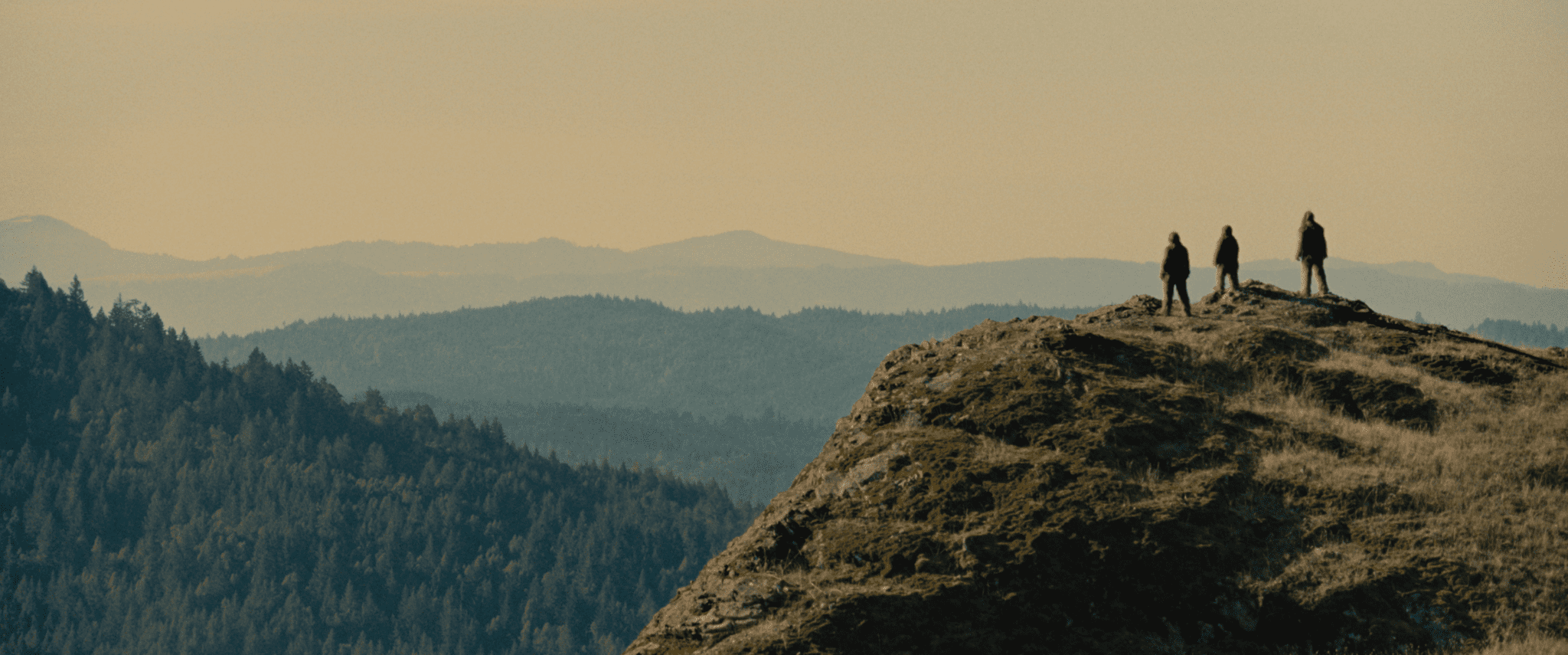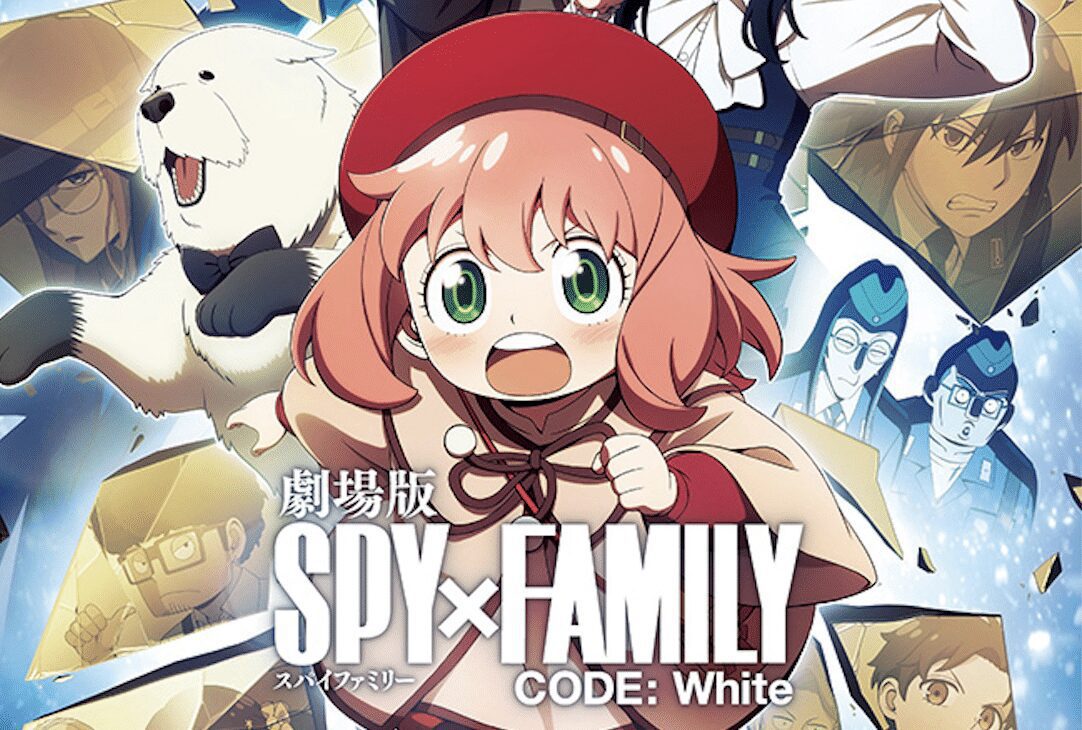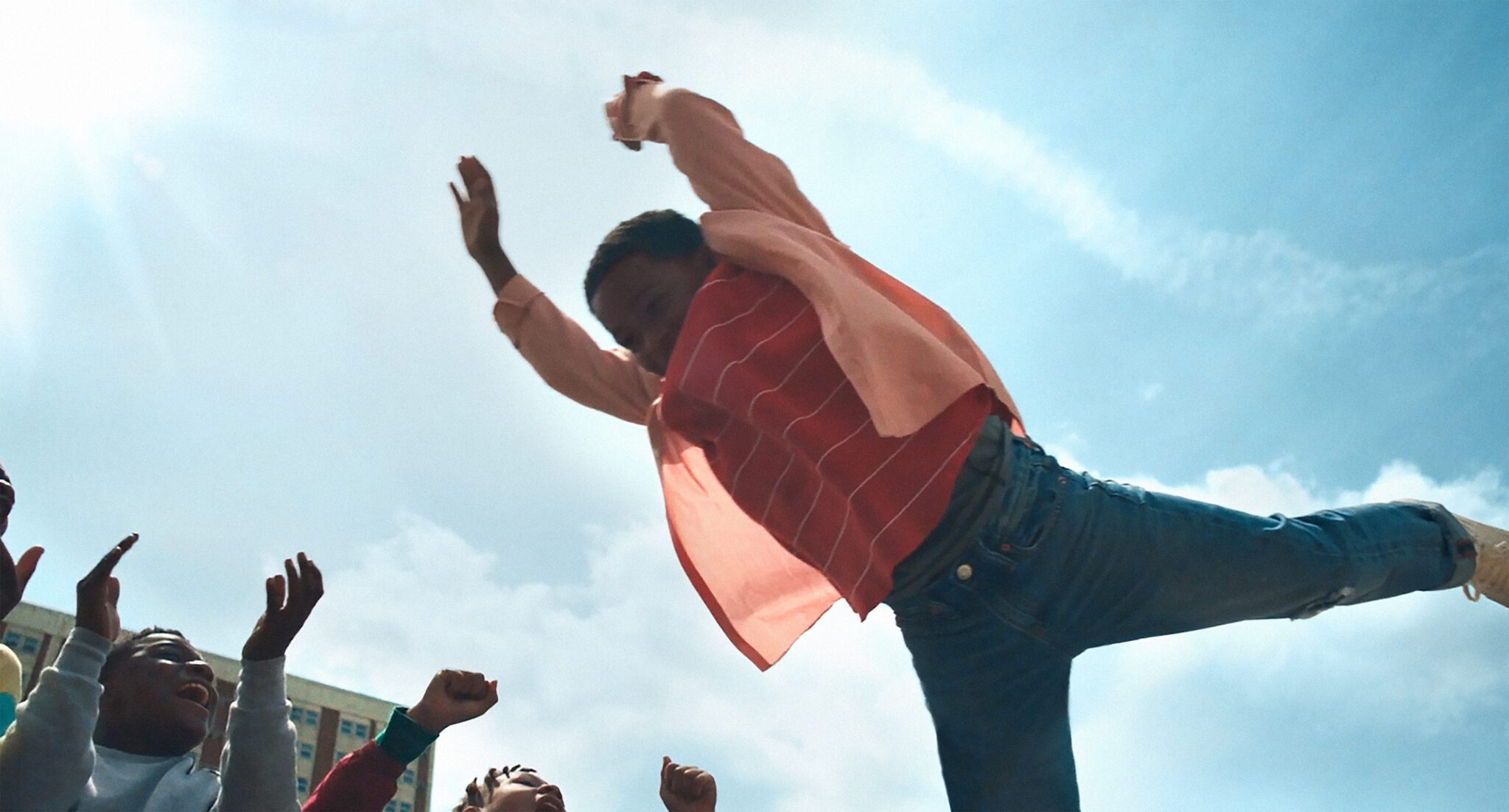
Directed by Tony Cervone, Scoob! sees the highly-anticipated return of the team at Mystery Inc. ? Fred, Daphne, Velma and his lovable dog, Scooby-Doo ? who have been unraveling paranormal mysteries since they were kids. Though, when the evil Dick Dastardly tries to kidnap Scooby in order to unleash an ancient legend, Mystery Inc must team up with Blue Falcon and his team of superheroes in order to stop Dastardly from causing a global ?dogpocalypse?.
Having played in the Warner Bros. animation universe for almost three decades, Cervone has been involved in bringing many of Mystery Inc.?s adventures into our homes over the years. However, when the opportunity arose to bring Scooby-Doo back to the big screen, he knew that he needed something unique. To him, what sets Scoob! apart from other stories was its interest in, at long last, putting Scooby and Shaggy?s emotional journey at the core of the film.
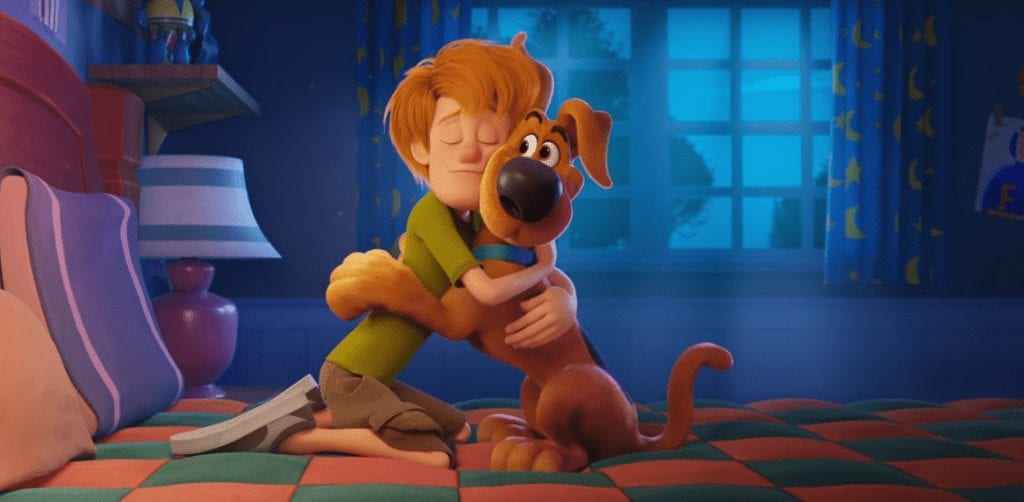
?I had, prior to the movie, told a number of Scooby-Doo stories and I felt at that time that we’ve already done a lot of these,? explains Cervone. ?What kind of new thing can you do? What I really liked about the script and the original story was [that] it took Scooby and Shaggy–these two characters that are kind of a comic relief in their own show and are very reluctant investigators, to say the least–and it pushed them out forward. It made them really have to do the heavy lifting of the story, both of the mystery and of their friendship. [To me,] it felt fresh. Finally, we’re going to really kind of dig into those two. Really, that was the thing that hooked me. I love the opportunity of bringing these characters to life in a feature animated way, for sure. I was excited by that as well. But I really liked the story of their friendship and moving them to the center of the narrative. I thought [that] was really interesting.??
With the first series, Scooby-Doo, Where Are You? first airing on CBS in 1969 and an ever-increasing number of television series, toys and merchandise since then, the team at Mystery Inc have truly been somewhat of a cultural zeitgeist for a very long time. Asked why he believes that these characters continue to remain relevant after all these years, Cervone believes that much of the appeal lies in the enduring characters and fun element of solving mysteries together.

?I think it’s a number of things. I think one of [the reasons] is [that] Scooby and Shaggy are fun and they’re great,? he considers. ?They’ve been a part of lot of people’s lives for generations now. So, they feel like friends. They’re fun, funny and they genuinely like each other, which I think is something that people respond to. Then, I think that the gang themselves are kind of archetypes that are still relevant. There’s always going to be the heart, the brain and the muscle. Those are always things that still exist. I think that they still feel relevant. And I think there’s something about solving mysteries. You know, they’re meddling kids. They’re not professional mystery solvers. They don’t get paid for this. No one has given them this task. They do it because they’re passionate about it and it’s fun to watch them solve mysteries. It’s fun to watch them be right, whereas all the people around them believe a monster’s real or whatever. Even the police seem to believe that there’s a ghost in that lighthouse, but the kids are like, ‘That’s not a ghost. It’s an insurance scam’ or something. So, I think there’s that. It’s fun for everyone.?
Of course, as times change, Cervone recognizes that shows need to change with them in order to reflect the current culture. In doing so, however, he also understands that every generation has certain characters and tropes that different people connect with and, as story-tellers, it?s important to try to bridge the gap between them.
?I think they always reflect the time that they’re being made in,? Cervone clarifies. ?We’re not bringing Scooby-Doo back. There’s a brand-new show right now. There’s been 19 different series, I think. So, there?s always a Scooby-Doo being made. It’s always been on somewhere. That’s one thing that I learned personally. I grew up with the original Scooby-Doo. So, at some point, once a character like Scrappy-Doo was introduced, I said, ‘Oh, I don’t like this. The show jumped the shark.’ [But], if you were six when Scrappy-Doo was introduced, then Scrappy-Doo is important to you and you can’t forget that. You [can’t] forget that these characters are important to a lot of different people’s childhoods and you have to be respectful of it. So, you have to be aware of the whole history and realize that something you don’t like is someone’s favorite thing. You’ve got to kind of be cool about it.??

While Scooby, Shaggy and the gang have been solving mysteries for over five decades now, what makes Scoob! particularly unique is its acknowledgement of the broader Hanna-Barbera universe. While playing with classic characters such as Dick Dastardly, Blue Falcon and more was exciting and fun, reintegrating different projects together was not without its challenges.
?The original plan was always [that] this is the Hanna-Barbera Justice League,? Cervone states. ?This is the Hanna-Barbera cinematic universe. I thought that was really exciting too. I was more like, how are we going to do it? These are characters are really different from each other. They have different styles. How do we put Dick Dastardly and Fred Jones in the same movie? They don’t look anything in common. They’re both human males [but] they don’t look like they’re even from the same species. We all were scratching our head about it for a long time, but really what helped us get over it was that Hanna-Barbera never worried about this kind of stuff and they wouldn’t have been worried about it now. The people that created those shows mixed stuff up all the time and they liked doing it. They made Laff-A-Lympics, if you remember that show? It had like every character in it and I don’t think anyone was worried that Blue Falcon and Magilla Gorilla were in the same show. So, at some point, we just [said], ‘Okay, let’s embrace this. Let’s lean into it.’ So, we did. And there are a lot of conflicting animation styles happening in the same shot but it wound up being its own thing. I think it kind of became original and fun because of it.?
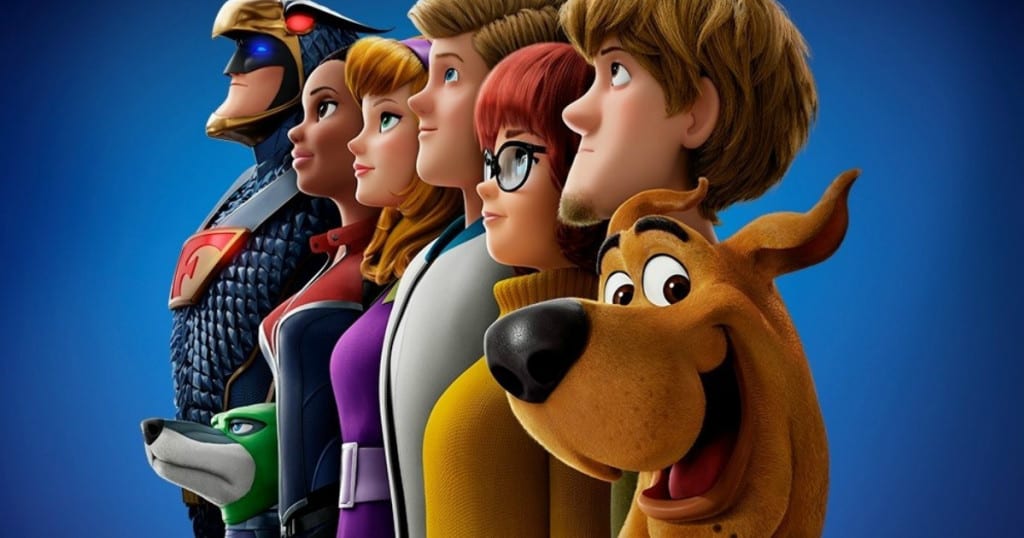
Further, Cervone also points out that another obstacle to bringing such wildly different styles together was trying to balance the film?s celebration of nostalgia with its use of cutting-edge technology.
?We definitely tried to do both [concepts] at once all the time and [not] do one at the expense of the other,? he recalls. ?It was a fun challenge and one that we’re weirdly comfortable with. I felt like it was more fun than scary, but we had a million discussions about these things. Take, for example, the trees in Captain Caveman’s world. The trees in that world are very realistically rendered like a prehistoric tree would be, but their silhouettes and their shapes are straight out of the Flintstones. Is the detail making you forget about the Flintstones or is that kooky shape making you forget it’s a tree? We had a zillion discussions about it all the time. So, that’s just one of a million examples of that. That’s fun stuff to talk about.?
By opening the door to so many different animated characters, Scoob! feels like somebody blew the lid off the proverbial Hanna-Barbera toy box, allowing the animation team to let their imaginations run wild. Cervone admits that it?s been fun to see how others connect with different pieces of Hanna-Barbera history.
?There are so many [easter eggs] and it’s fun to hear which one?s people catch and which ones didn’t.,? he beams. ?I was talking to someone earlier who freaked out when [they] saw that pterodactyl and I’m [said] good. [They asked] “Is that the pterodactyl from?Johnny Quest? Right. And I’m like, ?Yes, it is!? We didn’t invent too much. We appropriated as much as we could… Anyone who [said], ‘Hey, you know, it’d be cool there if we could try that.’ This was the one movie where I always hear people talk about this kind of stuff and they say, “This happens behind the scenes, but it never makes it into the movie.” [But] I’m proud that we are the movie where all of these ideas actually made it into the film.??

Although the animated mash-ups and easter eggs were fun to dream up, he also feels strongly that the most important aspect of the film is the message at its core. For him, the heart of the film lies truly lies in helping kids understand what it means to grow and mature and how that affects their friendships.
Says Cervone, ?The heart of the story is becoming who you were meant to be and what does that do to your friendship. We all felt that was very relevant. It’s something that anyone from any age [can understand], because it keeps happening at any age. In anyone’s life, things happen that challenge friendships and it happens over and over and over again but friendships change and friendships adapt. [I think] Becoming who you are meant to be, but doing that with your friends who’s also becoming who they are meant to be was really the heart of the movie. Scooby and Shaggy are best friends and something challenges that friendship and are they going to survive and what does it mean? Them acknowledging that change happens and you need to rise to the challenge of it was absolutely the most important thing in the movie, at least to us. I love the easter eggs and I love blowing stuff up but the heart of the movie is about friendship and support.?

?I don’t want to digress too much, but one thing I like about the movie is Dastardly,? he continues. ?Because what Dastardly wants wouldn’t be any different than what Shaggy wants. If Shaggy lost Scooby, he would do anything to get him back. And so would Dastardly! Dastardly’s just evil. So, he’ll do evil things to get him back. But his goal is understandable. It isn’t evil, but he’s just a flawed person… They’re the shadow version of Scooby and Shaggy. They love each other with equal intensity but there’s a shadow. They’re the Star Trek evil universe version of Scooby and Shaggy.?
Though the film was always intended for a theatrical release, plans changed quickly amidst the current global pandemic with the focus shifting to distribution via premium video on demand. Even though he wishes that Scoob! would have had its day on the big screen, Cervone is grateful that Warner Bros. has found a way to support families at this time by bringing some fun into their lives at a time when people need it.

?Aren’t we living in some strange times right now?? he asks. ?I feel like, if this had happened and we weren’t in the middle of a pandemic, it would be a very different story. Personally, am I bummed I’m not seeing it in the movie theater? Sure. I love movie theaters and this is a movie. This is a big cinemascope, widescreen feature film. It holds up at an enormous size. It looks great but there aren’t any theaters right now. On top of it, I do feel like this is a crisis, no matter what. It’s a crisis. People are upset and rightfully so. This is kind of a nice, comfortable thing to have. It’s comfort food and it’s a good family film. It’s something that I think the adults who grew up loving this stuff can watch with their kids and [both will] get something out of it. That’s, to me, what sets Warner Bros stuff apart from all other studios. We’ve been making irreverent cartoons for all ages since Bugs Bunny and we still strive to do it. It feels like a Warner Bros movie. It’s funny. There are jokes that are going to sail over kid’s head and that’s okay. These references that we’re talking about are for us. They’re not for six-year olds. Then, [those] six-year olds will grow up one day and they’ll Google something and they’ll say, ‘Oh my gosh, that thing I liked was really based on another thing’. That’s all good too. This pop culture stuff is important, especially in times like this. Pop culture is comfort food. It makes people happy. So, I’m bummed about losing the theater experience, but I’m also really happy about providing entertainment at a time that people need it.?
For full audio of our interview with Tony Cervone, click here.
SCOOB! hits video on demand on Friday, May 15th, 2020..


